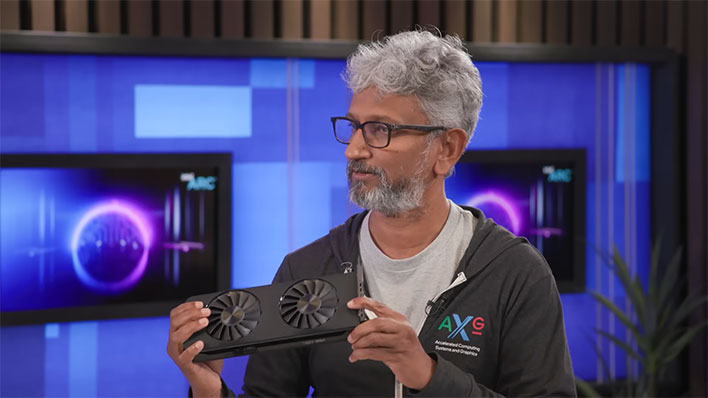Intel Reorgs AXG Graphics Unit, Reassigns Raja Koduri, What Does This Mean For Arc?

Intel is shuffling things up a bit within its graphics division, and is essentially splitting its Accelerated Computing Systems and Graphics Group (AXG) while reassigning Raja Koduri to his previous Intel Chief Architect role. This raises the question of what will become of Intel's Arc graphics roadmap, and in particular what it means for gamers who continue to hope Intel can give AMD and NVIDIA meaningful competition in the discrete GPU space.
Building GPUs (or any kind of processor) is incredibly difficult and complex. It's also potentially rewarding, which is why Intel poached Koduri from AMD (while on sabbatical at his old stomping ground) to lead its efforts back into discrete graphics, years after the company pulled the plug on Larrabee. Several years later, Intel embarked on a staggered launch culminating in the Arc A770 and A750, as well as a few lower-end discrete GPUs.

While not competitive with the best and fastest silicon from AMD or NVIDIA, the launch was still an important one, as it drove hope of better availability and affordability for mainstream graphics cards. In our review of the Arc A770 and A750, we noted they could collectively be a disruptor for the gaming GPU market, and the party was only getting started.
Naturally, folks are wondering what will happen following Intel's reorganization, and why Intel is shaking things up so soon after Arc graphics cards released to retail.
"Discrete graphics and accelerated computing are critical growth engines for Intel. With our flagship products now in production, we are evolving our structure to accelerate and scale their impact and drive go-to-market strategies with a unified voice to customers. This includes our consumer graphics teams joining our client computing group, and our accelerated computing teams joining our datacenter and AI group," Intel said in a statement.
"In addition, Raja Koduri will return to the Intel Chief Architect role to focus
on our growing efforts across CPU, GPU and AI, and accelerating high priority technical programs," Intel added.
Reading between the lines, this means fewer resources for Arc since it will no longer have its own dedicated marketing team. We can also speculate that this move is a consolidation of resources, and not necessarily an unexpected one. Just two months ago, Intel CEO Pat Gelsinger addressed what he said were "worsening economic conditions" and how the chip maker planned to respond—by cutting costs.
"Despite the worsening economic conditions, we delivered solid results and made significant progress with our product and process execution during the quarter," Intel CEO Pat Gelsinger said at the time. "To position ourselves for this business cycle, we are aggressively addressing costs and driving efficiencies across the business to accelerate our IDM 2.0 flywheel for the digital future."
So here we are several weeks later with questions swirling about the future of Arc. We spoke with Intel about this, and the company was adamant that its Arc consumer roadmap is intact. As such, you can still expect to Intel to follow up its Arc Alchemist launch with eventual Battlemage and Celestial GPUs for gaming.
This is in line with Intel confirming its commitment to its Arc graphics roadmap this past summer, in response to rumors that the entire Arc product line was going to be cancelled. From everything Intel is saying now, in regards to its reorganization efforts, the roadmap is still cemented in place for both consumer and enterprise GPUs.


